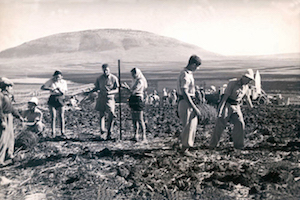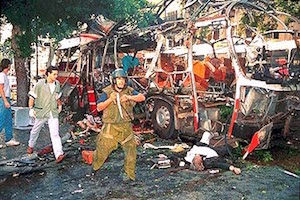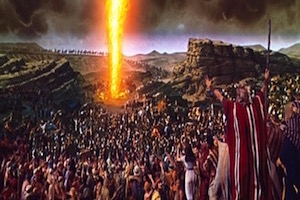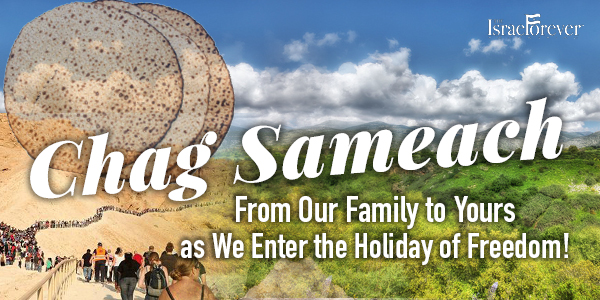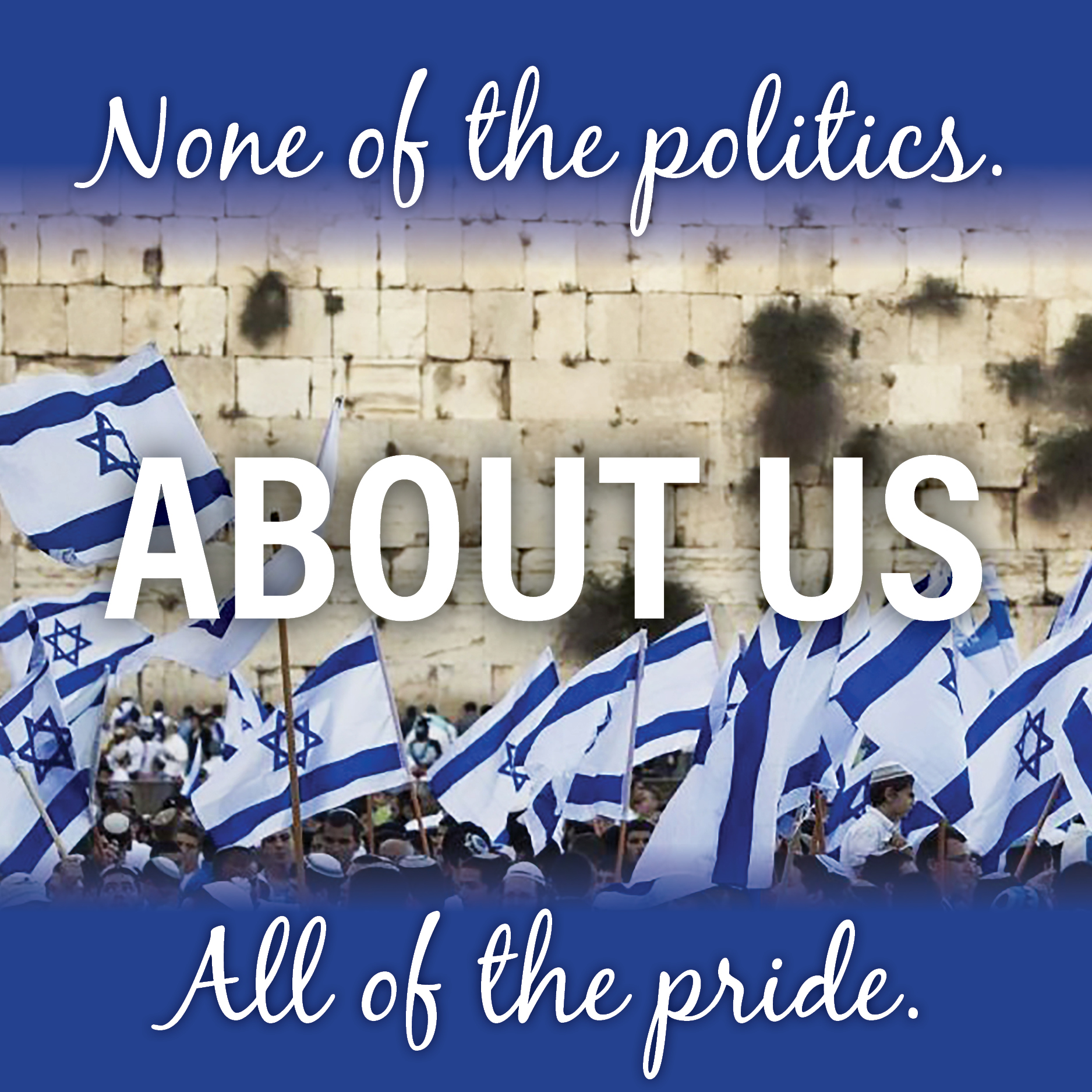Passover 1943 and the Heroic Jewish Resistance
By Eric Gartman
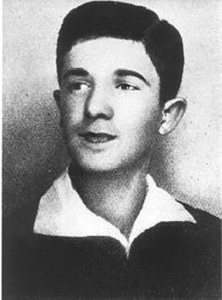
The leader of the Jewish Fighting Organization, Mordechai Anielewicz, organized the ghetto resistance that held off the German army for weeks. An early member of Zionist organizations, he knew that the Jews must defend themselves, since no one else would.
As we celebrate our freedom, it is incumbent upon us to take pause and remember another, less joyous Passover, when a few hundred ragtag Jewish fighters held off the might of the Nazi Army.
On the night of April 18, 1943 an SS force consisting of 2,000 soldiers with tanks and artillery surrounded the Warsaw Ghetto, the largest ghetto in Europe. The battle lines were clearly drawn. No one slept in the ghetto that night.
Around midnight, the Jewish Fighting Organization (ZOB) and Jewish Military Organization (ZZW) emerged from their hiding places and prepared for battle. Not coincidentally, the main Jewish fighting forces were mostly composed of Zionists, who understood the need for Jewish self-defense. Other groups, such as socialists, declined to fight, fearing certain loss without Polish support. Elders warned of massive German retaliation. But the Zionists knew there was no other option.
Several Jews in German uniforms, armed with pistols made their way through the ghetto, ignoring the curfew. Messengers banged on doors and gates, waking their comrades. The unarmed residents watched with consternation mixed with enthusiasm. The cry rang out, “Let us fight, die, for the honor of our people!” By 2 AM, all Jewish fighters were in their positions. Outside the ghetto, the sounds of motorized vehicles running and infantry marching could be heard.
At dawn, the German army marched into the ghetto. The Germans’ spirits were high, singing as they approached the Jewish buildings, confident of a quick and easy victory. In the apartment buildings above them, a ragged few lightly armed Jews awaited them.

Poorly armed fighters such as these held off the mighty German Army for one month in the spring of 1943.
A Jewish resistance fighter, Tovia Bozkikowski, recalled his emotions as he prepared for his final battle:
“Monday, April 19, was the day before Passover, and the first day of spring. Sunshine penetrated even to the cheerless corners of the ghetto, but with the last trace of winter the last hope of the Jews had also disappeared. Those who had remained at their battle stations all night were annoyed by the beauty of the day, for it is hard to accept death in the sunshine of spring.”
Thankfully, the richness of our story is a balm that soothes the pain. From the biblical times of Abraham declaring there is one G-d, to Moses leading the Jewish people out of slavery and into the land G-d promised them, to Bar Kokhba fighting the Romans and deadly exile of the people, fast forwarding to Theodore Herzl calling for the rebirth of a Jewish nation two thousand years later, to David Ben Gurion declaring it so. We must recognize that the leaders make the history books but it is the everyday people like you and me who dream and build along with them.
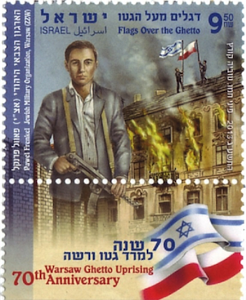
An Israeli stamp commemorating the Warsaw Ghetto Uprising. The raising of the Zionist flag on the roof was a great rallying point.
Below him he saw long lines of soldiers carrying machine guns, backed by tanks, motorcycles, and artillery. He wondered what he could hope to achieve against such might, armed only with pistols, rifles, and Molotov cocktails.
At 6:00 AM the first German detachment advanced. As they neared the Jews opened fire with all they had: guns, grenades, and small homemade bombs. The bombs and grenades exploded over the surprised Germans’ heads. They halted and returned fire. But standing in the open square they made for easy targets, while the Jews were concealed in the buildings. Several Germans lay dead and wounded in the square. Soon, they retreated. It was the first time since the occupation began that the Jews saw Germans run in panic. The tables had finally been turned.
A second, larger battle took place that morning at the corner of Gesia and Zamenhofa streets. The resistance fighters opened fire on the Germans with bullets, hand grenades, and Molotov cocktails. The Germans were at an intersection and surrounded on four sides. The Jews even managed to set two tanks on fire using homemade bombs. One of the crews was burned alive. German soldiers ran screaming, their clothes on fire, spreading panic through the ranks.
“From my balcony, I could see them in all their helplessness and their loss of control,” a ZOB fighter recalled. “The air was full of wails and shouts. Many of them tried to run to the walls of the houses for cover but everything was barred, and beyond that, death was pursuing them. In the noise, the fluster, and the cries of the wounded, he heard the astonished outcry of the Germans: The Jews have arms! The Jews have arms!” Dead and wounded SS men littered the pavement. The invaders had not expected any serious resistance. Yet here it was, much to their surprise. The second German incursion had failed.
A cry of victory ran through the ghetto. Fighters and civilians alike celebrated the German retreat. Alexander Donat was elated by the resistance action that day: “When we returned to the shelter, we told the others what had happened, and although we were all doomed to a terrible death, we were gripped by a strange ecstasy. We embraced and congratulated one another; women cried and laughed; people began to sing psalms in a low voice and one gray-haired man spoke the blessings aloud: How wonderful it was to have lived to see such times!”
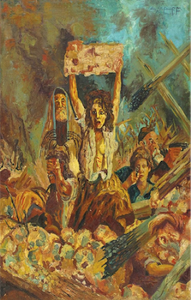
The Warsaw Ghetto Uprising by Christof Stefanoff
Donat and the others had no illusions about the final outcome of the fighting. Nonetheless, he felt they had taken their place in Jewish lore:
“Suddenly I felt beyond life and death. I felt sure we were going to die; but I felt a part of the stream of Jewish history. We were part of an ancient and unending stream of immortal tradition that went back to Titus and his Roman legions ravishing Jerusalem, to persecution in Spain under Isabella and Ferdinand, to Khmelnitsky massacres, and to more recent pogroms and massacres.”
Fighting also rocked Muranowski Square that day. The ZZW had placed most of its fighters and its best equipment there, including two machine guns. The buildings at the square provided good firing positions. It was a strong defensive site. Here, the Germans retreated under heavy fire.
Buoyed by their success, the Jews at Muranowski Square went on to the rooftops and unfurled a Zionist (later Israeli) flag, and a Polish flag. The flags were clearly visible in much of Warsaw. A cry went out among the Poles: “Muranowski Square is in the hands of the Jews!” The Germans were aware of the potential problems these flags might cause in rallying the Poles to the Jews side. The German commander, Jurgen Stroop, declared that flags are instruments of war, just as weapons. Himmler himself ordered Stroop to take down the flags at all costs. But a second German attack on Muranowski Square failed.
The first day had gone to the Jews. Incredibly, the ragtag rebels had defeated the German army. IN the words of the commander of the Jewish Fighting Organization, Mordechai Anielewicz,
“It is impossible to put into words what we have been through,”“One thing is clear, what happened exceeded our boldest dreams…The dream of my life has risen to become fact. Self-defense in the Ghetto will have been a reality. Jewish armed resistance and revenge are facts. I have been a witness to the magnificent, heroic fighting of Jewish men and women of battle.”
The first day of the uprising was also the first evening of Passover. All across the ghetto, Jews in their cramped hiding places celebrated the exodus from Egypt with whatever provisions they could scrounge up. Without proper ingredients, they prepared the Matzo with dark flour. Despite the darkness around them, the festival went on as it had for generations.
One fighter who had forgotten about the holiday, Tuvia Borzykowski, entered an apartment to search for supplies. The apartment was the home of a rabbi. The flat was a mess, littered with broken glass and furniture. Incongruously, in the middle of the chaotic scene a table was set for the holiday. Borzykowski sat down to celebrate Passover with the rabbi against the background of a ferocious battle, one they all knew the Jews were destined to lose.
The redness of the wine in the glasses which were on the table was a reminder of the blood of the Jews who perished on the eve of the holiday. The Hagadah was recited while in the background incessant bursts of bombing and shooting, one after the other, pounded through the night. The scarlet reflection from the burning houses nearby illuminated the faces of those around the table in the darkened room…
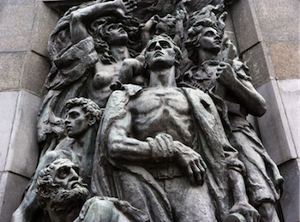
The magnificent memorial to the ghetto fighters in Warsaw, known as The Ghetto Heroes Monument, salutes the fallen Jewish fighters.
The mood of the room went up and down, depending on the shooting and fires; when they eased off, it went down, when they increased, it improved. In a moment of surging desire the rabbi expressed his hope for a miracle, as in ancient days in Egypt. But a wave of despair drowned his last hope, as we felt that our inexorable fate was to perish one by one to the last.
Despite his despair, the rabbi managed to tell the young fighter: “I have lived my life, but you youngsters – do not flinch, fight on and may God be on your side.”
The youngsters did not flinch. The fighting went on for days, and then weeks. In the end they lost, but they taught us many lessons: Fight on no matter what they odds are, but most of all, only a Jewish state can safeguard the Jewish people. That lesson became a reality a few years later on May 14, 1948, when the State of Israel was born.

Born in Israel to American parents, historian Eric Gartman never lost his fascination for the Jewish homeland. He is the author of Return to Zion: The History of Modern Israel, (2015), a critically-acclaimed narrative of the birth and survival of the Jewish State.
Recommended:
YOUR ISRAEL CONNECTION FOR PASSOVER
Bring Israel into your Passover Seder today!
About the Author



